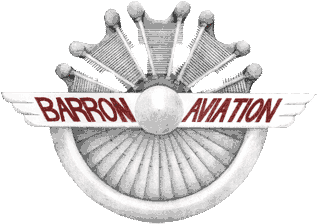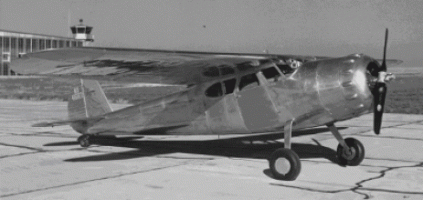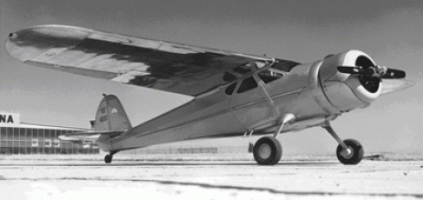
190/195 Information
The Cessna 195 is one of the finest classics ever built. With all metal construction, roomy interior, radial engine, and beautiful lines, it is already in an elite class. When one considers its useful load, low fuel consumption and relatively high cruising speed, it’s really in a class of its own. The popularity of, and demand for, these aircraft is booming, and support is now higher than it has ever been.
Born from the award winning Cessna Airmaster, the 190/195 series is Cessna’s Business Class version. Plans for this project began prior to United States involvement in World War II. All civilian aircraft were put on hold while Cessna built “Bamboo Bombers” and Gliders for the war effort. After the war, Cessna recognized the renewed civilian and business markets for aircraft and filled them in that order.
December 7, 1944 marks the first flight of the P-780 Prototype 190. It had many of the correct components but the whole fuselage was fabric covered steel tube fabrication. Later prototypes looked more and more like the Cessna 190 & 195’s we know today.
Production began for the 195 in July of 1947, beginning with serial number 7003. The Continental powered 190 followed in October. By the time of production the model series had approval for float and ski operations. Type Certificate A-790 governed the production of these two models as well as every model to follow. All of these airplanes shared a common sequence of serial numbers. Models were built in the sequence they were ordered by customers; therefore serial numbers are not tied to model designations. Serial numbers began with 7003 and ran through 7999, then jumped to the 16,000 series, finishing with 16,183, for a total production run of 1180 planes. These numbers also included the 83 Military LC-126 varieties.
Cessna did an excellent job of designing and producing the 190/195 series. It is a very solid airplane with a wing designed well beyond the targeted limit load factor. The airframe design is very clean and has many unique features. The landing lights retract into the wings when not in use as does the cabin entry step. It is operated by the opening and closing of the main entry door. The pilot’s side window rolls down for easy communication with ground personnel and on ground air circulation. Pressing the release button and pulling back on the parking brake lever also locks the flight controls. The tail wheel is steerable for easy ground handling at low speeds. To make engine and accessory work easier, the whole engine swings out on its mount. This can be done without removing the main cowling.
Many options could be ordered through the Cessna 195 production run. The float installation kit was one of the most extensive, including a smaller left side exit door and complete airframe priming with Zinc Chromate inside the airframe, in addition to all of the float installation modifications. Some of the other options were; a propeller spinner, wheel fairings, dual landing lights, dual control wheels and radio equipment. Rudder trim, Crosswind Landing Gear, and “Light” Gear Legs were installed as they were developed, starting at certain serial numbers. The next arrangement still fascinates me today. A customer could actually order a Cessna 195 without an engine, take his own engine (of the correct model) to Cessna, put it on the airplane and fly away! Try that in today’s world.
The basic model differences are listed below along with basic performance specifications that vary from the main list.
195:
This was the first model released and the one that the performance specifications are listed for. It was powered by a Jacobs R755-A2 engine, rated at 300 hp.
190:
This model is the same as the 195 but is powered by a Continental W670-24 engine. This engine is rated at 240 hp and is known to be smoother and drier than its Jacobs counterparts. With this engine installed, the plane required a different cowling. Though not noticeable to most, it is shorter than the Jacobs cowls. The 190 is about 10 mph slower, climbs about 200 fpm less, and burns about .5 gph less than the 195. There are not many 190s left. Most have been converted to Jacobs powerplants due to better parts availability and more power.
195A:
The “A” Model was virtually the same as its two predecessors but was powered by the Jacobs R755-9 (L-4), 245 hp engine. This engine was, and still is, available in great numbers. Many aircraft purchasers took advantage of Cessna’s option to provide your own engine with this model. These engines were available “Military Surplus” after the war and were cheap. You can still buy these Military Overhauled Engines in their original cans today. This is a very economical option but this powerplant is known for slightly less performance than the Continental. They are still very acceptable, however the extra horsepower of the –A2 & -B2 engines does make a noticeable difference.
195B:
As usual with most production runs, the last model was the best. This model was Cessna’s effort to revive the 195 market. They installed a Jacobs R755-B2 engine with 275 hp. This engine has been the overall favorite among the owners for many years, mostly from a reliability standpoint (although all of these engines were extremely reliable). The elevators were re-designed with a shorter chord for better cruise stability. Larger chord split flaps were added. This made no significant difference in stall speed but did help with pitch attitude on approach and speed bleed characteristics. This was the most refined model of the 190 series offered. It was available from mid 1952 until the series production was stopped in the fall of 1954.
LC-126 MILITARY MODELS
The military ordered a total of 83 LC-126 models. There were three basic models with mostly Cessna options and a few military re-designs. All of these were Jacobs R755-A2 (300 hp) powered, with Crosswind gear, Seaplane Kit, and other ground handling / servicing upgrades. The first “A” model was basically just that with military specified radio equipment. The “B” model had a few more specified alterations but the “C” model was the one that a highly useful modification was made. An extended baggage compartment (on both left and right sides) was designed and a large baggage compartment door was added. This was primarily for a single or dual stretcher installation. This model also had a jettison system for the main door and parachute pack seats. Many of the “LC” models have been “Civilianized” and are still flying today.
Prototype Models
LC-126 Military Models
Specifications
For the next topic click the title below











